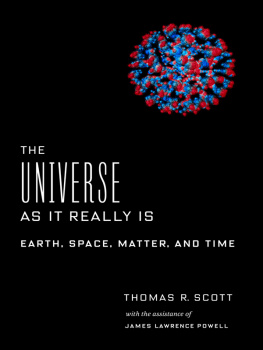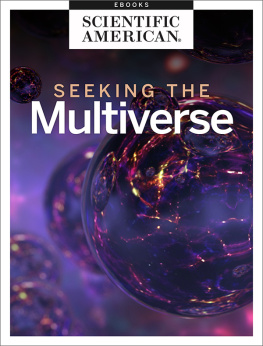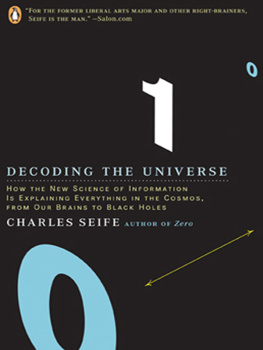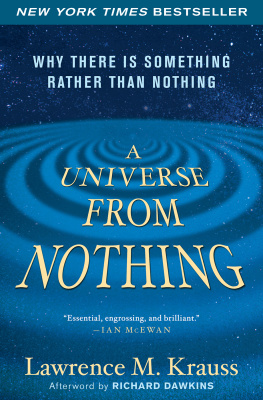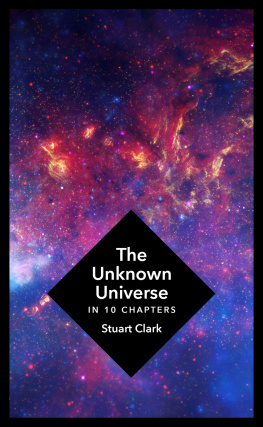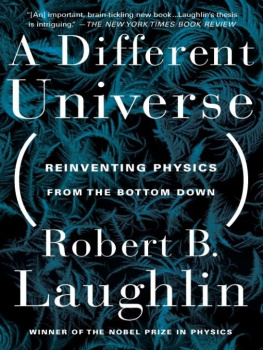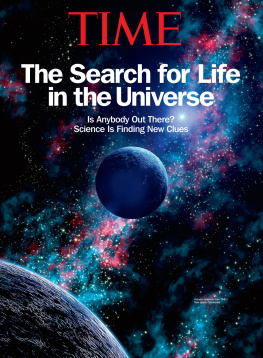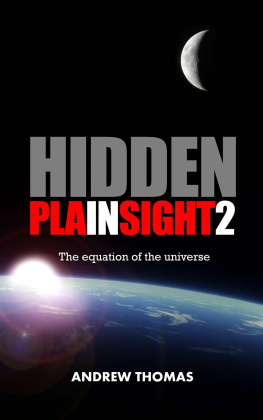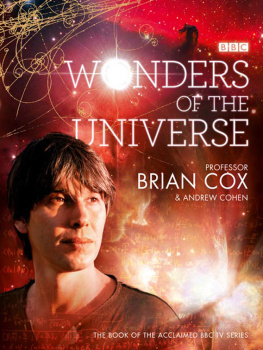Table of Contents
THE UNIVERSE AS IT REALLY IS
Columbia University Press
Publishers Since 1893
New York Chichester, West Sussex
cup.columbia.edu
Copyright 2018 Thomas R. Scott
All rights reserved
E-ISBN 978-0-231-54576-1
Library of Congress Cataloging-in-Publication Data
Names: Scott, Thomas R., author. | Powell, James Lawrence, 1936 author.
Title: The universe as it really is: Earth, space, matter, and time / Thomas R. Scott; with the assistance of James Lawrence Powell.
Description: New York: Columbia University Press, [2018] | Includes bibliographical references and index.
Identifiers: LCCN 2017055511 | ISBN 9780231184946 (cloth: alk. paper) | ISBN 9780231545761 (e-book)
Subjects: LCSH: Cosmic physics. | Space sciences. | Earth (Planet) | Universe. | Gravitational fields. | Meteorology.
Classification: LCC QC806 .S375 2018 | DDC 523.01dc23
LC record available at https://lccn.loc.gov/2017055511
A Columbia University Press E-book.
CUP would be pleased to hear about your reading experience with this e-book at .
Cover design: Lisa Hamm
Cover image: ArSciMed/Science Source
For me, it is far better to grasp the Universe as it really is than to persist in delusion, however satisfying and reassuring.
CARL SAGAN
CONTENTS
A s we know, modern science has evolved to become ever more specialized. Today, a field like minegeologyhas specialties, subspecialties, and even sub-subspecialties. It is rare to find a scientist or writer who can comprehend a single discipline at once, much less all of science; it is virtually impossible to find one who can also write well enough to explain the myriad aspects of science, from subatomic quarks to colossal quasars, to a curious general reader or a student encountering these concepts for the first time. Thomas R. Scott was that rarest of persons, and this book is the culmination and embodiment of his rare talents for explaining and practicing science.
I had the opportunity to review this book when it was first submitted to Columbia University Press in manuscript form. I recommended publication with great enthusiasm. Dr. Scotts subsequent revision was just as impressive. Then came the shock of learning of his untimely death before he had a chance to make his last edits and submit the final version of the manuscript to the publisher.
Patrick Fitzgerald, Science Publisher at Columbia University Press, asked me to take over steering the manuscript to publication. I was happy to do this alongside astronomer Neil Comins, who provided me with important feedback on some astronomical topics beyond my understanding. In the course of working to bring this work to fruition I have read this book three times, and each time I have come to appreciate Tom Scotts command of science and his writing ability more. Each time I understood something that I did not understand before. I predict that you will also benefit from reading it more than once, perhaps dipping into this chapter or that again as your interest dictates.
I have no doubt that Tom Scott regarded science in the same way as Carl Sagan, from whose The Demon-Haunted World: Science as a Candle in the Dark our title and epigraph are drawn. Both of these authors exalted science not only for its practical benefits, nor only as a way to satisfy our innate human curiosity, but also as a candle to light the darkness and lead us to truthif we open our eyes and see the Universe as it really is.
James Lawrence Powell
T homas R. Scott had recently completed post-reader revisions and sent them to his editors when he was stricken with a fatal heart attack. The Scott family wishes to thank Columbia University Press, Science Publisher Patrick Fitzgerald, and Professor James Lawrence Powell for seeing this project through to completion. Our family is deeply gratified to see this work in print and to have Toms journey through the sciences shared with the world.
In his career of research, teaching, and academic administration at the University of Delaware and San Diego State University, Tom distinguished himself in many ways, but the one that likely made the strongest impression on students, colleagues, friends, and even his young grandchildren was his ability to clearly explain complex principles of science, both in and beyond his own field of neuroscience. His weekly spot, San Diego Science, aired on KPBS radio for several years and was received enthusiastically by a wider public. Many of his listeners asked him to elaborate these presentations fuller in book format.
The book you hold here, lovingly labored over in his all too brief retirement, represents Toms efforts to present an engaging, accurate, and enjoyable tour of our physical universe. As his wife and long-term collaborator in many enterprises, both academic and personal, I enjoyed being a trial general reader, noting where I had difficulty following him or felt overdosed in technical details, trying out his suggested experiments, commenting on drafts, and suggesting he emphasize the tour that moves readers through his chapters. I know he would have acknowledged the colleagues in the physical sciences who responded to his questions on their specialties. Among these were Alan Sweedler, Stanley Maloy, Pat Abbott, Harry Shipman, and William Tong. I regret not having a more complete list.
Tom believed that science and our understanding of the universe are always works in progress, calling for the best we have of observation, experimentation, collaboration, measurement, data, theory, and critical review. This book continues the shared endeavor for better comprehension of our physical world. We hope you will enjoy it.
Bonnie Kime Scott
W ell, here we areand there wasnt much chance of that. For several billion years, all sorts of things had to happen just so for me to be tapping on a keyboard in a moment we arbitrarily label 2017. The very fabric of the cosmosnatures fundamental forces, the mass of the proton, the age of the universe itselfhad to align precisely to create the universe that created us. Physics permits biology.
That permission set us on a winding evolutionary path guided by drastic climate changes, fuming volcanoes, sliding tectonic plates, and the occasional bulls-eye by a suicidal asteroida four-billion-year odyssey never to be repeated and the only possible story that could have led to human life. Having permitted biology, physics dictates its fate.
Even after this unlikely sequence, our existence as individuals would have been a fools bet as Homo differentiated itself from the great apes. Through 125,000 generations, that little sperm had to beat 100,000,000 rivals to that big egg every time to make you. Your chances of hitting the lottery are greater than your chances of being here to buy the ticket.

